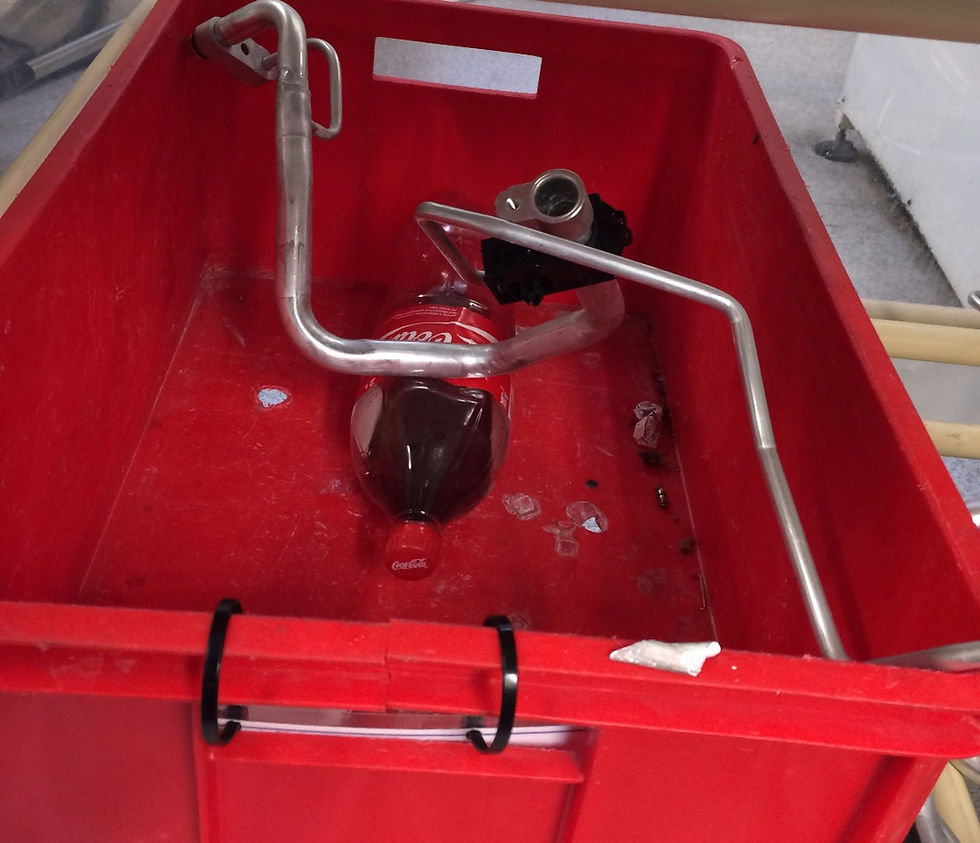Finding Kaizen Inspiration: Improving Everyday Processes
- Russell Watkins

- Feb 3
- 3 min read
Updated: Apr 16
A magazine once asked lean practitioners where their inspiration to fight the good fight was drawn from. This got me thinking, and I concluded that mine comes from seeing glaring opportunities every day, hence the café picture above.
Where Do Kaizen Ideas Come From?
Kaizen ideas can spring from various environments: train stations, aeroplanes, blood donation centers, rugby dressing rooms, parties, and even gardening. You name it; kaizen is available for mining anywhere there's a process aimed at delivering value for yourself or others.
Recently, I found myself in the café of a large UK department store. I spent 11 minutes waiting in a coffee and cake queue. Upon entering, my companion sniffed the air, sized up the queue, and decided her best plan was to bolt for a table. The picture below summarizes our experience, with numbers aiding in narrating the tale.

Kaizen Examples and the 7 Wastes in Everyday Life
Here are some noteworthy steps I observed during my visit:
People join the queue here.
They get to this point in the queue to choose a delicious panini.
They clutch their cold panini for another 5 minutes until they reach the cashier.
The cashier, whom we'll call "Claire," completes the transaction and calls her kitchen associate.
The associate, "Katie," walks to meet her.
The cold panini is handed over.
Katie takes it back to where the ovens are located.
Claire gives the shopper a numbered block as a visual signal, indicating they should place it on their table while awaiting their warmed panini.
When it's ready, Katie retrieves it and walks back to find the shopper.
10. Sometimes, she confirms the number with Claire.

Identifying the 7 Wastes
From the process described above, we can identify some of the seven wastes:
Operator Motion
There is a significant amount of unnecessary walking around involved in this process.
Bad Quality
The customers are left with cold paninis, which is unappetizing.
Overprocessing
The process is unnecessarily complex, leading to frustration for both staff and customers.
Transportation
Katie walks to deliver the rapidly cooling panini, wasting time.
Idle Time
I experienced unnecessary queuing and waiting, leading to frustration.
Improving the Work - Continuous Improvement Ideas
As I observed this cycle repeat, I wondered aloud why they couldn't work differently. Here are some suggestions for improvement:
Introduce a laminated picture combined with a chute at point (3).
Customers could choose their panini and send it down the chute.
As they approach the cashier, customers can grab a laminated picture of their selected panini. This would require a manageable number of pictures with barcodes.
By the time customers arrive at the cashier, their panini could be ready, allowing for a seamless scanning process to complete the purchase.
While this proposal requires careful planning to effectively link the shopper to their panini—especially if lead time varies—it presents an easy opportunity to:
Increase customer satisfaction through reduced lead times.
Reduce operator motion, resulting in less tired associates.
Improve throughput while decreasing labor costs.
Why Bother Increasing Your Lean Skills Outside of Work?
While this café example may seem trivial, consider the broader implications when applying such thinking to vital scenarios. Imagine this mindset in a Médecins Sans Frontières (MSF) treatment camp for Ebola victims or a refugee camp on the Syrian border. The potential for improvement is vast.
To their credit, Toyota and other companies have helped in these kinds of situations. I would heartily recommend the following:
Society won't collapse if this café maintains its wasteful practices. Still, it does provide us with opportunities to hone our skills by finding kaizen examples in everyday life. Let's work together to eradicate cold paninis and enhance our lean skills in the process.




Comments